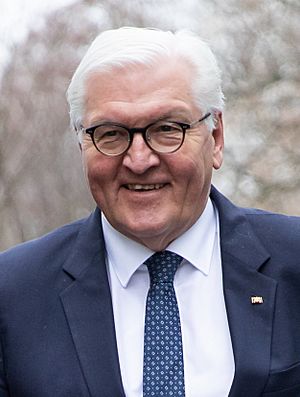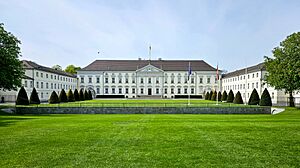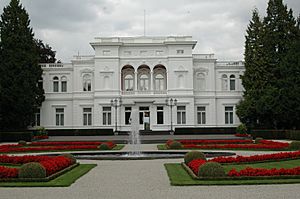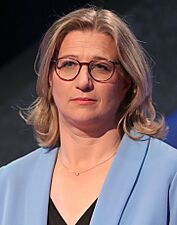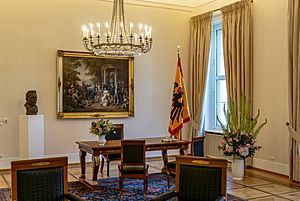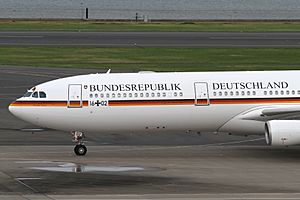President of Germany facts for kids
Quick facts for kids Federal President of the Federal Republic of Germany |
|
|---|---|
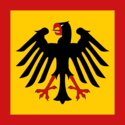
|
|
Logo of the German President
|
|
| Style | Herr Bundespräsident (informal) His Excellency (diplomatic) |
| Residence | Schloss Bellevue (Berlin) Villa Hammerschmidt (Bonn) |
| Appointer | Federal Convention |
| Term length | 5 years,
renewable once consecutively
|
| Constituting instrument | Basic Law for the Federal Republic of Germany (1949) |
| Precursor | The Reichspräsident |
| Inaugural holder | Theodor Heuss |
| Formation | 24 May 1949 |
| Deputy | President of the German Bundesrat (Ex officio) |
| Salary | €254,000 annually |
The President of Germany is the official head of state for Germany. This important role is officially called the Federal President of the Federal Republic of Germany. The person currently holding this position is Frank-Walter Steinmeier. He was first chosen on 12 February 2017 and then again on 13 February 2022. He is now serving his second five-year term, which started on 19 March 2022.
Germany has a parliamentary system of government. This means the chancellor is the head of the government. The president's job is mostly ceremonial, like a figurehead. However, the president also has the right and duty to act politically. They can guide important discussions in society. They also have some special "reserve powers" for times when politics are unstable. For example, they can grant pardons. German presidents can serve two five-year terms in a row. They have a lot of freedom in how they do their job.
According to Article 59 (1) of Germany's constitution, the Basic Law, the president represents Germany in international matters. They sign treaties with other countries and welcome diplomats. Also, all new federal laws must be signed by the president before they become official. The president can even stop a law if they believe it goes against the constitution.
The president's actions and public appearances show what the country stands for. They represent Germany's existence, fairness, and unity. The president ranks higher than the chancellor at official events. Their role is to bring people together and make sure laws and the constitution are followed. It's a tradition that the president usually doesn't comment on daily news or political arguments. This distance helps the president offer clear ideas, give advice, and suggest new things. To do this, they usually stay out of party politics.
Contents
- How the President is Chosen
- What the President Does
- How the President Influences Germany
- Special "Backup" Powers
- What Happens if the President Can't Serve?
- How a President Can Be Removed
- The President's Office and Symbols
- A Look Back: History of the President
- List of German Presidents Since 1949
- See also
How the President is Chosen
The president is chosen for a five-year term. The vote is secret, and there is no debate. A special group called the Federal Convention elects the president. This group includes all members of the Bundestag (Germany's parliament). It also includes an equal number of electors chosen by the parliaments of Germany's 16 states. These state electors are chosen based on their state's population. Since Germany reunited, all Federal Conventions have had over 1200 members. This is because the Bundestag has always had more than 600 members. State electors do not have to be members of their state's parliament. Sometimes, well-known citizens are chosen.
Germany's constitution, the Basic Law, says the convention must meet no later than 30 days before the current president's term ends. If a president leaves office early, it must meet within 30 days after that. The President of the Bundestag organizes and leads this meeting. From 1979 to 2009, these conventions were always held on May 23. This date is the anniversary of Germany's founding in 1949. However, when Horst Köhler resigned in 2010, an early meeting was needed. This ended the tradition of meeting on May 23.
In the first two rounds of voting, a candidate needs more than half of all votes to win. If no one gets this many votes after two tries, there's a third and final vote. In this last vote, the candidate with the most votes wins.
The election result is often shaped by political parties. Usually, the candidate from the main party or group in the Bundestag is expected to win. But members of the Federal Convention vote secretly. They can vote against their party's choice. Because of this, some presidential elections have been very close. This happened when parties had similar numbers of votes. It also happened when ruling parties couldn't agree on one candidate. For example, in 1969, Gustav Heinemann won by only six votes on the third try. In 2010, Christian Wulff was expected to win easily. But he didn't get enough votes in the first two rounds. His opponent, Joachim Gauck, did surprisingly well. Wulff finally won in the third round. If opposition parties do well in state elections, they might have enough votes to defeat the chancellor's party's candidate. This happened in 1979 and 2004. So, presidential elections can sometimes hint at what will happen in a future general election. There's a saying in German politics: "If you can create a President, you can form a government."
Past Elections
| Election | Date | Site | Ballots | Winner (endorsing parties) |
Electoral votes (percentage) |
Runner-up (endorsing parties) |
Electoral votes (percentage) |
|---|---|---|---|---|---|---|---|
| 1st Federal Convention | 12 September 1949 | Bonn | 2 | Theodor Heuss (FDP, CDU, CSU) |
416 (51.7%) | Kurt Schumacher (SPD) |
312 (38.8%) |
| 2nd Federal Convention | 17 July 1954 | West Berlin | 1 | Theodor Heuss (FDP, CDU, CSU, SPD) |
871 (85.6%) | Alfred Weber (KPD) |
12 (1.2%) |
| 3rd Federal Convention | 1 July 1959 | West Berlin | 2 | Heinrich Lübke (CDU, CSU) |
526 (50.7%) | Carlo Schmid (SPD) |
386 (37.2%) |
| 4th Federal Convention | 1 July 1964 | West Berlin | 1 | Heinrich Lübke (CDU, CSU, SPD) |
710 (68.1%) | Ewald Bucher (FDP) |
123 (11.8%) |
| 5th Federal Convention | 5 March 1969 | West Berlin | 3 | Gustav Heinemann (SPD, FDP) |
512 (49.4%) | Gerhard Schröder (CDU, CSU, NPD) |
506 (48.8%) |
| 6th Federal Convention | 15 May 1974 | Bonn | 1 | Walter Scheel (FDP, SPD) |
530 (51.2%) | Richard von Weizsäcker (CDU, CSU) |
498 (48.1%) |
| 7th Federal Convention | 23 May 1979 | Bonn | 1 | Karl Carstens (CDU, CSU) |
528 (51%) | Annemarie Renger (SPD) |
431 (41.6%) |
| 8th Federal Convention | 23 May 1984 | Bonn | 1 | Richard von Weizsäcker (CDU, CSU, FDP, SPD) |
832 (80%) | Luise Rinser (Greens) |
68 (6.5%) |
| 9th Federal Convention | 23 May 1989 | Bonn | 1 | Richard von Weizsäcker (CDU, CSU, FDP, SPD) |
881 (84.9%) | None | 108 (10.4%) no-votes |
| 10th Federal Convention | 23 May 1994 | Berlin | 3 | Roman Herzog (CDU, CSU) |
696 (52.6%) | Johannes Rau (SPD) |
605 (45.7%) |
| 11th Federal Convention | 23 May 1999 | Berlin | 2 | Johannes Rau (SPD, Greens) |
690 (51.6%) | Dagmar Schipanski (CDU, CSU) |
572 (42.8%) |
| 12th Federal Convention | 23 May 2004 | Berlin | 1 | Horst Köhler (CDU, CSU, FDP) |
604 (50.1%) | Gesine Schwan (SPD, Greens) |
589 (48.9%) |
| 13th Federal Convention | 23 May 2009 | Berlin | 1 | Horst Köhler (CDU, CSU, FDP, FW) |
613 (50.1%) | Gesine Schwan (SPD, Greens) |
503 (41.1%) |
| 14th Federal Convention | 30 June 2010 | Berlin | 3 | Christian Wulff (CDU, CSU, FDP) |
625 (50.2%) | Joachim Gauck (SPD, Greens) |
494 (39.7%) |
| 15th Federal Convention | 18 March 2012 | Berlin | 1 | Joachim Gauck (CDU, CSU, FDP, SPD, Greens, Free Voters, SSW) |
991 (79.9%) | Beate Klarsfeld (The Left) |
126 (10.2%) |
| 16th Federal Convention | 12 February 2017 | Berlin | 1 | Frank-Walter Steinmeier (SPD, CDU, CSU, Greens, FDP, SSW) |
931 (74.3%) | Christoph Butterwegge (The Left) |
128 (10.2%) |
| 17th Federal Convention | 13 February 2022 | Berlin | 1 | Frank-Walter Steinmeier (SPD, Greens, FDP, CDU, CSU, SSW) |
1045 (72.7%) | Max Otte (AfD) |
140 (9.74%) |
Who Can Be President?
Anyone who can vote in Bundestag elections and is at least 40 years old can become president. However, no one can serve more than two five-year terms in a row. As of 2025, only five presidents have been elected for a second term. These are Heuss, Lübke, von Weizsäcker, Köhler, and Steinmeier (who is currently in office). Only two of them, Heuss and von Weizsäcker, finished both terms. Lübke and Köhler resigned during their second terms. The president cannot be a member of the federal government or any parliament at the federal or state level.
Taking the Oath
After becoming president, they must take an oath. This oath is written in Article 56 of the Basic Law. It is taken in a joint meeting of the Bundestag and the Bundesrat. This is the only event that requires both groups to meet together by law. The president can choose to leave out the religious parts of the oath.
The oath says:
I swear that I will dedicate my efforts to the well-being of the German people, promote their welfare, protect them from harm, uphold and defend the Basic Law and the laws of the Federation, perform my duties conscientiously and do justice to all. (So help me God.)
German law says that taking the oath confirms the president's role, but it doesn't create it. This means the president doesn't have to take the oath right away to start their job. In practice, the oath is usually taken in the first few days or weeks. This happens on a day that works for both the Bundestag and Bundesrat. If a president refused to take the oath, it could be a reason to remove them from office. If a president is re-elected for a second term, they do not take the oath again.
What the President Does
The president helps form the German government and works closely with it. Generally, the president can act as they see fit. However, Article 58 of the German constitution states that the president's decisions need a second signature. This signature must come from the chancellor or the relevant federal minister. This rule helps make sure the government acts together. It is similar to the checks and balances system in other countries. But some actions do not need a second signature. These include proposing, appointing, or dismissing the chancellor. They also include calling or dissolving the Bundestag. Other actions are declaring a legislative state of emergency or asking the chancellor and ministers to stay in office temporarily. The president also has the sole right to grant pardons for federal crimes.
Because of this, the president regularly meets with the chancellor. They talk about current political issues. German presidents also meet with individual federal ministers and other senior officials. The "Head of the Office of the President" attends Federal Cabinet meetings. This person shares the president's views and reports back to the president.
The president's most important jobs and powers include:
- Suggesting who should be the chancellor to the Bundestag.
- Appointing and dismissing the chancellor and their cabinet ministers.
- Dissolving the Bundestag in certain situations.
- Declaring a special legislative emergency in certain situations.
- Calling the Bundestag to meet.
- Signing and making laws official, or stopping them in certain cases.
- Appointing and dismissing federal judges, civil servants, and military officers.
- Using the power to pardon individuals for federal crimes.
- Giving out honors and awards for Germany.
- Representing Germany both at home and abroad.
Choosing the Government
After an election or if the chancellor's job becomes empty, the president suggests a person to the Bundestag. This person is then voted on to become chancellor. If this vote fails, the Bundestag gets 14 days to choose another person. In both cases, the president must appoint the person if they get a majority of all elected Bundestag members' votes. This is called the Kanzlermehrheit, or "Chancellor majority."
If the Bundestag cannot choose anyone with a majority in 14 days, there is one final vote. If someone gets a majority in this vote, the president must appoint them. If no one gets a majority, the president has seven days. They can either appoint the person with the most votes or dissolve the Bundestag.
The chancellor can only be removed if the Bundestag votes for a new chancellor who has majority support. This is called a constructive vote of no confidence. If this happens, the president must dismiss the old chancellor and appoint the new one.
The president also appoints and dismisses other government members. They do this based on the chancellor's suggestions. In theory, this means the president can only appoint people the chancellor suggests. It's not clear if the president could refuse to dismiss or appoint a minister. No president has ever done this.
The constitution does not limit who can be chancellor. In practice, the president only suggests someone who already has majority support from political parties. The president usually does not get involved in these party talks. However, after the "Jamaica coalition" talks failed in 2017, President Steinmeier invited party leaders to try and form a government.
Other Important Jobs
The president appoints federal judges, federal civil servants, and military officers.
When the Parliament Might Be Dissolved
Unlike leaders in some other countries, the German president cannot just dissolve the Bundestag on their own. The Bundestag also cannot dissolve itself. The president can only dissolve the Bundestag in two specific situations that involve the Bundestag's actions:
- If the Bundestag fails to elect a chancellor within 14 days after an election or vacancy. There is then one final vote. If no one gets a majority, the president has seven days. They can either dissolve the Bundestag or appoint the person with the most votes as chancellor.
- If the chancellor asks for a vote of confidence and loses it. The chancellor can then suggest to the president to dissolve the Bundestag. The president can do this within 21 days. This can also happen if a new chancellor is not chosen through a vote of no confidence. The chancellor does not have to ask for a dissolution. The president also does not have to grant one.
The first situation has never happened. The second situation has been used to call early elections. This happened in 1972, 1983, 2005, and 2025. In all these cases, the chancellor asked their own party to vote against the confidence motion. This allowed the president to dissolve the Bundestag. This strategy is debated, and some cases were even taken to court. But it has been ruled lawful.
Signing New Laws
All federal laws must be signed by the president before they become official. The president can refuse to sign a law, which is like a veto. In theory, the president has the power to veto any bill. However, past presidents have not used this power just because they disagreed with a law. Usually, the president checks if the law was passed correctly according to the constitution. They also check if the law's content is constitutional. Only when a president had serious doubts about a bill's constitutionality did they refuse to sign it. It's also important to know that the president can sign a "vetoed" bill later. This might happen if the Basic Law changes or if the bill is fixed to address their concerns. Their first refusal to sign is not a final veto.
As of 2023, this has only happened nine times. No president has done it more than twice during their term:
- In 1951, Theodor Heuss stopped a tax bill. He believed it needed the Bundesrat's approval, which it didn't have.
- In 1961, Heinrich Lübke refused to sign a business law. He thought it violated the freedom to choose a job.
- In 1969, Gustav Heinemann vetoed the "Engineer Act." He believed this law should be handled by the states, not the federal government.
- In 1970, Gustav Heinemann refused to sign the "Architects Act" for the same reason.
- In 1976, Walter Scheel vetoed a bill about conscientious objection. He thought it needed the Bundesrat's approval, which it lacked.
- In 1991, Richard von Weizsäcker refused to sign a change to the "Air Traffic Act." He believed it was unconstitutional. He signed it later after the Basic Law was changed.
- In 2006, Horst Köhler vetoed a bill about flight control. He believed it was unconstitutional.
- Later that same year, Horst Köhler vetoed the "Consumer Information Act" for the same reason.
- In 2020, Frank-Walter Steinmeier refused to sign the "Hate Speech Act." He had concerns about its constitutionality. He signed the bill in April 2021 after it was changed.
Karl Carstens, Roman Herzog, Johannes Rau, Christian Wulff, and Joachim Gauck signed all bills during their time in office.
Germany's Face to the World
The president represents Germany to other countries (Art. 59 Basic Law). They make official visits abroad and welcome leaders from other nations. They also sign treaties with foreign countries. These treaties only become official after the Bundestag approves them. The president also appoints German diplomats and receives diplomats from other countries.
Pardons and Special Awards
According to Article 60 (2) of the German Constitution, the president can grant pardons. This means the president can cancel or reduce punishments for individuals. However, the president cannot issue a general amnesty. An amnesty would forgive or reduce sentences for a whole group of crimes. That requires a law passed by the Bundestag and Bundesrat. Because Germany has a federal system, the president only handles certain federal criminal cases. These include things like spying or terrorism. They also handle disciplinary cases against federal civil servants, judges, and soldiers.
It is a tradition that the federal president becomes the honorary godparent of the seventh child in a family, if the parents wish. They also send congratulation letters to people celebrating their 100th birthday and to couples celebrating long-term anniversaries.
Special Powers in Emergencies
Article 81 allows a law to be passed without the Bundestag's approval. This can happen if the Bundestag rejects a vote of confidence. But it only happens if a new chancellor is not elected and the Bundestag is not dissolved. In this case, the chancellor can declare a proposed law "urgent." If the Bundestag then refuses to approve it, the government can ask the president to declare a "legislative state of emergency."
After the president declares this emergency, the Bundestag has four weeks to discuss the law. If they still don't approve it, the government can ask the Federal Council for approval. Once the Federal Council agrees, the proposed law becomes official.
There are limits to this "legislative state of emergency." After a president declares it for the first time, the government has only six months to use this process for other laws. It's unlikely the government could pass more than one other law this way.
Also, the emergency must be declared again for each new law proposal. This means the six months are not a time when the government, president, and Federal Council simply replace the Bundestag. The Bundestag still has full power to pass laws during these six months. The state of emergency also ends if the chancellor's term ends. During the same term, and after the six months, the chancellor cannot use Article 81 again.
A "legislative state of emergency" has never been declared. If there's a serious disagreement between the chancellor and the Bundestag, the chancellor usually resigns. Or, the Bundestag faces new elections. Article 81 is meant to help the government for a short time. It is not for long-term crises.
How the President Influences Germany
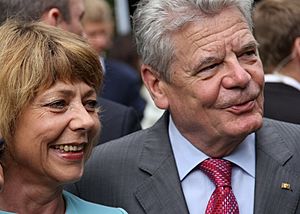
Even though candidates are usually chosen by political parties, the president is expected to stop being an active party member once they take office. Every president so far, except Joachim Gauck (who was an independent), has paused their party membership during their term. However, presidents have spoken publicly about their personal views on political issues. The fact that a president is expected to stay above politics means that when they do speak out, it is seen as very important. Sometimes, a president's speech has been a major topic in German political discussions for a year or more.
Special "Backup" Powers
According to Article 81 of the German constitution, the president can declare a "Legislation Emergency." This allows the federal government and the Bundesrat to pass laws without the Bundestag's approval. The president also has important decision-making power. This includes appointing a chancellor who only won with the most votes, not a majority. They can also dissolve the Bundestag in certain situations.
It is also possible, though a very big step that hasn't happened since 1949, for the president to refuse to sign a law just because they disagree with its content. This would be a veto. They could also refuse to approve a cabinet appointment. In all cases where a bill was not signed by the president, the presidents said the bill was clearly unconstitutional. For example, in late 2006, President Horst Köhler did this twice in three months. Also, in some cases, a president has signed a law but asked that political parties take the case to the Federal Constitutional Court. This is to check if the law is constitutional.
What Happens if the President Can't Serve?
The Basic Law does not have a Vice President. Instead, the President of the Bundesrat acts as the deputy for the President of Germany (Basic Law, Article 57). The President of the Bundesrat is usually the head of government of one of Germany's sixteen states. They are chosen by the Bundesrat in a set order each year. If the president's office becomes empty, the President of the Bundesrat takes over the president's powers temporarily. They do this until a new president is elected. While acting as president, they do not continue to lead the Bundesrat. If the president is temporarily unable to do their job (for example, if they are on a state visit), they can choose to give their powers to the President of the Bundesrat. For instance, in early November 2022, Peter Tschentscher, who was then President of the Bundesrat, filled in for President Steinmeier during his trip to Asia.
If the president dies, resigns, or is removed from office, a new president must be elected within thirty days. So far, a president's term has ended early three times:
- 1969: Heinrich Lübke resigned. He had announced his resignation nine months early. So, the Federal Convention could be held on time, and there was no gap in the office.
- 2010: Horst Köhler resigned. Jens Böhrnsen, who was the President of the Senate of Bremen and President of the Bundesrat, became Acting President.
- 2012: Christian Wulff resigned. Horst Seehofer, who was the Minister-President of Bavaria and President of the Bundesrat, became Acting President.
Back in 1949, Karl Arnold also acted as head of state for a few days. He was the Minister-President of North Rhine-Westphalia and President of the Bundesrat. This happened after the Basic Law became official, but before the first President of Germany was elected.
None of these three Bundesrat presidents, when acting as President, used any of the president's more significant powers. For example, they did not veto a law or dissolve the Bundestag. However, they would have been allowed to do so under the same rules as the actual president.
How a President Can Be Removed
While in office, the president is protected from being sued. They also cannot be voted out of office or recalled by the public. The only way to remove a president is through impeachment. This happens if the Bundestag or Bundesrat believes the president has intentionally broken German law. In either group, a two-thirds majority vote is needed. Once the president is impeached, the Federal Constitutional Court decides if they are guilty. If the court finds them guilty, it has the power to remove the president from office.
The President's Office and Symbols
Where the President Works and Lives
The president's main official home is Bellevue Palace in Berlin. The president's second official home is the Hammerschmidt Villa in Bonn. Bonn used to be the capital city of West Germany.
Even though these are the president's official homes, they do not live in Bellevue Palace. It is only used for official ceremonies and work. The president and their spouse live in a villa in Dahlem, which is a part of Berlin.
The Office of the President (Bundespräsidialamt) is a top federal authority. It organizes the president's work and helps them with their duties as head of state. It also helps coordinate their work with other parts of the German government. The most senior official there is the Head of the Office of the President.
This office and its staff advise the president. They keep the president informed about everything happening in Germany and other countries. They also carry out the president's instructions or pass them on to the right government department.
How the President Travels
The president's car is usually black and made in Germany. It has the license plate "0 – 1" and the president's flag on the right side of the car. The president also uses a special helicopter run by the Federal Police. For air travel, they use VIP aircraft like the Bombardier Global 5000, Airbus A319CJ, Airbus A310, or Airbus A340. These planes are operated by the Executive Transport Wing of the German Air Force. When the president is on board, the flight's callsign is "German Airforce 001."
The President's Flag
A Look Back: History of the President
The job of the modern German president is very different from the Reich President of the Weimar Republic. That position had a lot of power and was a very important political figure.
The First German President (Weimar Republic)
The position of president of Germany was first created by the Weimar Constitution. This constitution was written after World War I and the abdication of Emperor Wilhelm II in 1918. In Germany, the new head of state was called the Reichspräsident.
Friedrich Ebert was Germany's first president, followed by Paul von Hindenburg. The office effectively ended when Hindenburg died in 1934. At that time, its powers were combined with those of the chancellor. Adolf Hitler then ruled Germany as "Führer und Reichskanzler." He combined his previous party and government roles. However, he did not officially become president. The office was not abolished, though presidential elections did not happen during the Nazi era. It was briefly brought back at the end of World War II. Hitler appointed Grand Admiral Karl Dönitz as his successor as "President of Germany." Dönitz agreed to surrender to the Allies and was arrested a few days later.
The Weimar Constitution created a system where power was shared. This was between the president, a cabinet, and a parliament. The president had much more power than the current president. They had an active political role, not just a ceremonial one. The president's influence grew a lot because of the instability during the Weimar period. The president appointed the chancellor and, with the chancellor's advice, appointed and dismissed cabinet members. The cabinet also needed the trust of the Reichstag (parliament). This was because the Reichstag could remove the cabinet with a vote of no confidence. All laws needed the president's signature to become official. While the president couldn't completely stop a law, they could insist that a law be put to a public vote in a referendum. The president could dissolve the Reichstag, handle foreign affairs, and command the armed forces. Article 48 of the constitution gave the president wide-ranging powers during a crisis. If there was a threat to "public order and security," the president could suspend civil rights and make laws by decree. This required the chancellor's co-signature.
The Weimar constitution said the president would be directly elected for a seven-year term. The election used a two-round system. The first president was elected by the National Assembly. After that, only two direct presidential elections took place. These were the elections of Paul von Hindenburg in 1925 and his re-election in 1932.
The system created by the Weimar Constitution led to some problems. The way elections were set up allowed many political parties to form. This made it hard for any party to create stable governments. This division led to frequent changes in government. In March 1930, no stable majority could be formed. President Hindenburg then appointed Heinrich Brüning as chancellor. He said Brüning's government should be formed "without regard to coalition ties." Brüning's time in office began a period of rule by decree. This marked the three governments that came before Adolf Hitler became chancellor.
The President in East Germany
The German Democratic Republic created the job of head of state in 1949. This person was called the President of the Republic. But after the first president, Wilhelm Pieck, died in 1960, they got rid of the office. Instead, they created a group of leaders. This group was very similar to the one in the Soviet Union. All government jobs, including the presidency, were chosen by the ruling Socialist Unity Party of Germany. This was approved by the Communist Party of the Soviet Union. After communist rule ended due to the Peaceful Revolution, the head of state became the parliamentary speaker. This happened after new, fair elections in 1990. Later that year, a new constitution was planned that would have brought back the presidency. But this never happened.
The President in Modern Germany
With the creation of the Grundgesetz in 1949, the office of President of the Federal Republic was created in West Germany. The president's powers were greatly reduced. This was partly because of how presidential powers were misused in the Weimar Republic. The real power was given to the chancellor.
When Germany reunited in 1990, the five East German states joined the Federal Republic. So, the president became the president of all German states. A new presidential office was not created.
List of German Presidents Since 1949
Twelve people have served as President of the Federal Republic of Germany. Six of them were members of the CDU. These were Lübke, Carstens, von Weizsäcker, Herzog, Köhler, and Wulff. Three were members of the SPD: Heinemann, Rau, and Steinmeier. Two were members of the FDP: Heuss and Scheel. One, Gauck, was an independent. Four presidents were ministers in the federal government before becoming president. These were Lübke (Agriculture), Heinemann (Justice), Scheel, and Steinmeier (Foreign Affairs). Two of them (Scheel, Steinmeier) had also been Vice-Chancellor of Germany. Three were heads of state governments: von Weizsäcker (West Berlin), Rau (North Rhine-Westphalia), and Wulff (Lower Saxony). Rau had also been President of the Bundesrat. Two were members of the Bundestag: Heuss and Carstens. Carstens had been President of the Bundestag. One was president of the Federal Constitutional Court (Herzog). Another was director of the IMF (Köhler). And one was Federal Commissioner for the Stasi Records (Gauck). Only five presidents (Heuss, Lübke, von Weizsäcker, Köhler, Steinmeier) have been re-elected for a second five-year term. Only two of those (Heuss, von Weizsäcker) served the full ten years. Christian Wulff served the shortest time, just over one and a half years.
The president is deputized by the president of the Bundesrat (according to Art. 57 GG). This person can do any of the president's duties. This happens if the president is temporarily unable to do so and gives them permission. This often occurs during state visits. It also happens if the presidency becomes empty. In that case, they become acting President until a successor is elected, which must happen within thirty days. This has happened three times:
- In 1949, Karl Arnold acted as President. This was after the Grundgesetz became official on 7 September 1949. It was before Theodor Heuss was elected on 12 September 1949.
- In 2010, Jens Böhrnsen acted as President. This was after Horst Köhler resigned and before Christian Wulff was elected.
- In 2012, Horst Seehofer acted as President. This was after Christian Wulff resigned and before Joachim Gauck was elected.
| No. | Portrait | Name (Birth–Death) |
Term | Party | Election | Deputies (Presidents of the Bundesrat) |
|||
|---|---|---|---|---|---|---|---|---|---|
| President of the Bundesrat Karl Arnold acted as President from 7 to 12 September 1949. | |||||||||
| 1 | 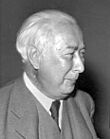 |
Theodor Heuss (1884–1963) |
12 September 1949 – 12 September 1959 |
FDP | 1949 | Karl Arnold (1949–1950) Hans Ehard (1950–1951) Hinrich Wilhelm Kopf (1951–1952) Reinhold Maier (1952–1953) Georg August Zinn (1953–1954) Peter Altmeier (1954–1955) Kai-Uwe von Hassel (1955–1956) Kurt Sieveking (1956–1957) Willy Brandt (1957–1958) Wilhelm Kaisen (1958–1959) |
|||
| 1954 | |||||||||
| 2 | 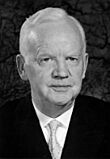 |
Heinrich Lübke (1894–1972) |
13 September 1959 – 30 June 1969 |
CDU | 1959 | Wilhelm Kaisen (1959) Franz Josef Röder (1959–1960) Franz Meyers (1960–1961) Hans Ehard (1961–1962) Kurt Georg Kiesinger (1962–1963) Georg Diederichs (1963–1964) Georg August Zinn (1964–1965) Peter Altmeier (1965–1966) Helmut Lemke (1966–1967) Klaus Schütz (1967–1968) Herbert Weichmann (1968–1969) |
|||
| 1964 | |||||||||
| 3 |  |
Gustav Heinemann (1899–1976) |
1 July 1969 – 30 June 1974 |
SPD | 1969 | Herbert Weichmann (1969) Franz Josef Röder (1969–1970) Hans Koschnick (1970–1971) Heinz Kühn (1971–1972) Alfons Goppel (1972–1973) Hans Filbinger (1973–1974) |
|||
| 4 | 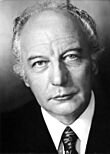 |
Walter Scheel (1919–2016) |
1 July 1974 – 30 June 1979 |
FDP | 1974 | Hans Filbinger (1974) Alfred Kubel (1974–1975) Albert Osswald (1975–1976) Bernhard Vogel (1976–1977) Gerhard Stoltenberg (1977–1978) Dietrich Stobbe (1978–1979) |
|||
| 5 | 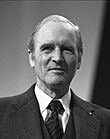 |
Karl Carstens (1914–1992) |
1 July 1979 – 30 June 1984 |
CDU | 1979 | Dietrich Stobbe (1979) Hans-Ulrich Klose (1979–1980) Werner Zeyer (1980–1981) Hans Koschnick (1981–1982) Johannes Rau (1982–1983) Franz Josef Strauß (1983–1984) |
|||
| 6 | 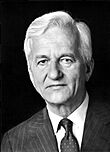 |
Richard von Weizsäcker (1920–2015) |
1 July 1984 – 30 June 1994 |
CDU | 1984 | Franz Josef Strauß (1984) Lothar Späth (1984–1985) Ernst Albrecht (1985–1986) Holger Börner (1986–1987) Walter Wallmann (1987) Bernhard Vogel (1987–1988) Björn Engholm (1988–1989) Walter Momper (1989–1990) Henning Voscherau (1990–1991) Alfred Gomolka (1991–1992) Berndt Seite (1992) Oskar Lafontaine (1992–1993) Klaus Wedemeier (1993–1994) |
|||
| 1989 | |||||||||
| 7 | 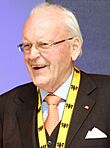 |
Roman Herzog (1934–2017) |
1 July 1994 – 30 June 1999 |
CDU | 1994 | Klaus Wedemeier (1994) Johannes Rau (1994–1995) Edmund Stoiber (1995–1996) Erwin Teufel (1996–1997) Gerhard Schröder (1997–1998) Hans Eichel (1998–1999) Roland Koch (1999) |
|||
| 8 | 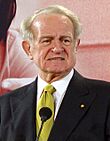 |
Johannes Rau (1931–2006) |
1 July 1999 – 30 June 2004 |
SPD | 1999 | Roland Koch (1999) Kurt Biedenkopf (1999–2000) Kurt Beck (2000–2001) Klaus Wowereit (2001–2002) Wolfgang Böhmer (2002–2003) Dieter Althaus (2003–2004) |
|||
| 9 | 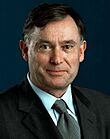 |
Horst Köhler (1943–2025) |
1 July 2004 – 31 May 2010 |
CDU | 2004 | Dieter Althaus (2004) Matthias Platzeck (2004–2005) Peter Harry Carstensen (2005–2006) Harald Ringstorff (2006–2007) Ole von Beust (2007–2008) Peter Müller (2008–2009) Jens Böhrnsen (2009–2010) |
|||
| 2009 | |||||||||
| President of the Bundesrat Jens Böhrnsen acted as President from 31 May to 30 June 2010. | |||||||||
| 10 | 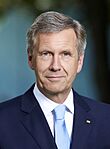 |
Christian Wulff (b. 1959) |
30 June 2010 – 17 February 2012 |
CDU | 2010 | Jens Böhrnsen (2010) Hannelore Kraft (2010–2011) Horst Seehofer (2011–2012) |
|||
| President of the Bundesrat Horst Seehofer acted as President from 17 February to 18 March 2012. | |||||||||
| 11 | 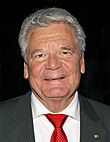 |
Joachim Gauck (b. 1940) |
18 March 2012 – 18 March 2017 |
Independent | 2012 | Horst Seehofer (2012) Winfried Kretschmann (2012–2013) Stephan Weil (2013–2014) Volker Bouffier (2014–2015) Stanislaw Tillich (2015–2016) Malu Dreyer (2016–2017) |
|||
| 12 | 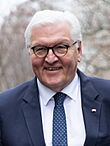 |
Frank-Walter Steinmeier (b. 1956) |
19 March 2017 – Incumbent |
SPD | 2017 | Malu Dreyer (2017) Michael Müller (2017–2018) Daniel Günther (2018–2019) Dietmar Woidke (2019–2020) Reiner Haseloff (2020–2021) Bodo Ramelow (2021–2022) Peter Tschentscher (2022–2023) Manuela Schwesig (2023–2024) Anke Rehlinger (Incumbent) |
|||
| 2022 | |||||||||
See also
 In Spanish: Presidente de Alemania para niños
In Spanish: Presidente de Alemania para niños


